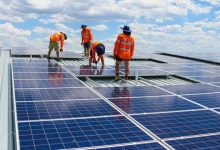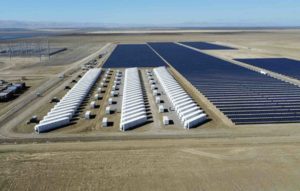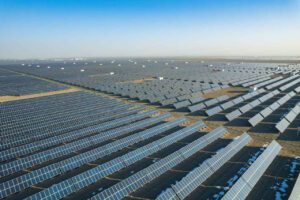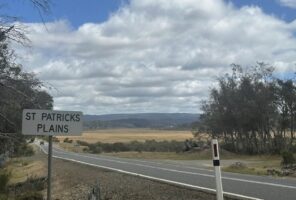Australia’s grid operator and the principal network lobby are now looking at a “hybrid” model as they search for an optimum system to fully “integrate” the growing amounts of rooftop solar and battery storage, and ultimately electric vehicles, into the country’s grids.
The Australian Energy Market Operator and Energy Networks Australia revealed on Monday they are studying – with the help of the CSIRO – a new complex model that will divide responsibilities between the operator and network owners for the monitoring and management of distributed energy resources.
These resources, which encompass technologies such as rooftop solar, batteries and EVs, will play a growing and critical in a future grid that will not just shift from polluting fossil fuels to renewable energy, but also from a predominantly centralised system to one where half the capacity and resources are distributed.
 Forecasts for the uptake of solar, batteries and EVs vary wildly, which is one of the reasons cited for difficulty in finding an agreed approach and to analyse the cost-benefits of the various options.
Forecasts for the uptake of solar, batteries and EVs vary wildly, which is one of the reasons cited for difficulty in finding an agreed approach and to analyse the cost-benefits of the various options.
The headline figure looks like this – (see graph above) and the forecast switch to a “hyper-decentralised” grid that will see Australia lead the world in the switch away from the traditional centralised system, based around large coal and gas plants in Australia.
But the forecasts for how quickly each of the technologies are adopted in Australia over coming decades vary wildly. The graph below illustrates that the difference can be 10-fold when it comes to the deployment of batteries, and significantly too for EVs, which with a growing demand for charging, and the ability to discharge back into the grid, will play a key role.
The 2020 “fast” forecast for solar already looks set to be broken, and if that trajectory continues it could result in the extraordinary sum of 58GW in rooftop solar on households and businesses by 2050. Even the slow scenario puts it at nearly 29GW.
The predictions for the uptake for battery storage and EVs vary more. For the EVs, certainly in the early years, the fast uptake looks out of range, but the CSIRO is predicting that between two thirds and virtually 100 per cent of all vehicles will be electric by 2050. Household batteries storage could vary by a factor of 10 in the medium to long term.
The challenge, say AEMO and the networks, is getting visibility over what is installed and where, identify potential limit and constraints, and devise a way into how those resources can be “optimised” and managed.
Exactly how to do that – without annoying the hell out of consumers – is the challenge at hand.
Three potential models for the creation of what is known as a “distributed market operator” (as opposed to a wholesale market operator), and a “distributed system operator” have been canvassed since the OpEN program was launched last year. After feedback, the two bodies are now looking at a “hybrid” system that will share responsibilities.
Fortunately, the language and the exaggerated “blackout” risk that marred the initial approach by ENA have been toned down, mostly likely at the behest of AEMO, even if this report was leaked first to The Australian newspaper, presumably to fish for the most dramatic headline.
Interestingly though, the word “orchestration” has been replaced by the term “optimisation”, with a view to putting a more positive spin on what is planned and hoped for.
The report itself says there is an issue in how a grid deals with a completely different system that features two-way flows rather than a one way flow, and which if not properly managed can create large voltage swings, and potentially, local outages.
 The solution, the new report says, consists of four principals: Knowing and monitoring what is installed; setting parameters for system limits (to be called operating envelopes), improving communications; and creating a market signal.
The solution, the new report says, consists of four principals: Knowing and monitoring what is installed; setting parameters for system limits (to be called operating envelopes), improving communications; and creating a market signal.
There is a sense of urgency in the works, because South Australia (at the end of the grid), and Western Australia (all by itself in the west) are approaching penetration levels where the AEMO sees difficulties if it continues, and there are numerous individual regions in other states seen to be at or nearing their limits.
In principal, managing this shouldn’t be too hard.
They will need to devise a system that keeps track of where DER is installed (that should largely happen thanks to the small scale solar scheme); ensure that output is monitored (the technology is there, and RE has long maintained every system should have one); and define those system limits (and thankfully the document suggests this could be “dynamic”, meaning no blanket or static limit, but one that can be adapted according to the season or need).
This last point is crucial.
In W.A., where RenewEconomy recently visited and had extensive discussions with key players, there is talk of things like “export limits”, but the smarter thinking is in terms of imposing this only in “season”, such as the spring or autumn days when the skies are clear but the temperature is mild. Distributed storage, particularly at a “community” level, will also ease the burden on two way flows in an elongated grid.
The final part of this challenge for AEMO and ENA is market signals. Here, the two bodies are particularly interested not just in tariff structure and grid services, but also the operations of “virtual power plants”, and how these are managed.
But then it comes down to who gets to do all this, and how it is managed. As a result of the feedback, particularly around the complexity of having an “independent” Distributed System Operator, and the potential conflict of interest of having networks act as a technical and market operator, the hybrid model was proposed.
 This would see networks retaining the technical DSO functions – managing and communicating distribution network constraints (and hopefully moving to dynamic rather than just static constraints), while AEMO manages a market platform that optimises all DER bids for wholesale, Frequency Control Ancillary Services (FCAS), network services and other identified market services.
This would see networks retaining the technical DSO functions – managing and communicating distribution network constraints (and hopefully moving to dynamic rather than just static constraints), while AEMO manages a market platform that optimises all DER bids for wholesale, Frequency Control Ancillary Services (FCAS), network services and other identified market services.
A final decision will be largely guided by a cost benefit analysis. The report by the CSIRO put the costs of DER at between $600 million to 2030 and $1 billion by 2050, with the net cost benefits of DER integration put at $1 billion by 2030.
But the report notes there is huge variance in predicted uptake of DER, in rooftop solar, battery storage and EVs. So more research will be done to consider the various trajectories.
AEMO chief executive Audrey Zibelman describes it as a “once-in-a-lifetime” opportunity for Australia to move to a two-way system for electricity production and distribution.
“The world is looking to Australia as the leader in installing rooftop solar and batteries to incentivise and integrate these customer resources to benefit all,” Zibelman said in a statement.
“AEMO can see a future where consumers’ controllable devices will have a marketplace to supply not just energy, but system and network services that reduce overall energy costs and help maintain system security.
“Through this process with Energy Networks Australia, the vast majority of stakeholders agree that actions are needed to be taken to build capabilities and trial new market mechanisms to ensure the final design delivers the benefits at the lowest cost.”











